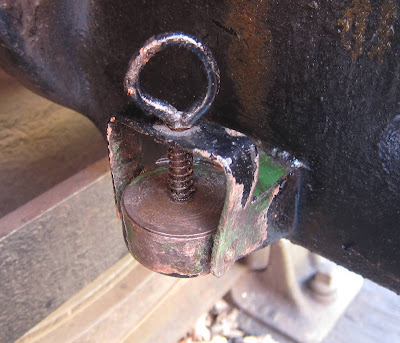Wood is a good material for winding the packing around as it grips the packing surface just the right amount without abrasion. I first drew a line along the dowel so I could see the angle of rotation. Then I pinned the end of the packing to the dowel.
I rotated the dowel to pull the packing rope around the dowel and pinned each turn either side of the line to allow me to cut one ring at a time without the remaining packing unwinding.
One end of the dowel was held in a vice to make it easier to hammer in the pins.
 |
| Packing rolled on to the dowel |
 |
| Packing pinned in place |
Next task is to light the fire and blow out the two old right hand piston gland packings and run-in this one.











































